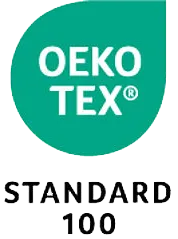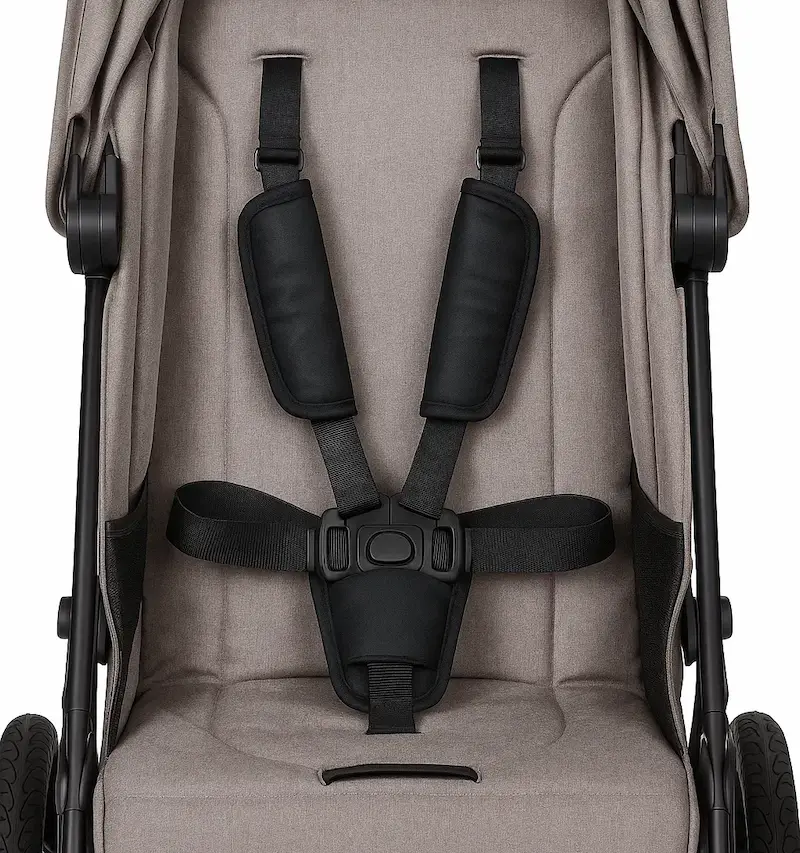Sourcing safe webbing for strollers, high chairs, or car seats? As a premier manufacturer, TMG Webbing supplies OEKO-TEX® Class 1 certified nylon straps that meet strict EN 1888 (Europe) and ASTM F833 (USA) standards. We offer bulk customization with zero-formaldehyde guarantees for global baby product brands.
As a specialized manufacturer, TMG Webbing produces straps that prioritize two things: Mechanical Safety (Strength) and Chemical Safety (Toxicity). This guide explains why OEKO-TEX Class 1 is the industry baseline.
1. The "Mouth Test": Why OEKO-TEX Class 1 Matters
 Babies chew on straps. This is a fact of life. Standard textile certification (Class 2) is safe for skin contact, but it is NOT sufficient for mouthing.
Babies chew on straps. This is a fact of life. Standard textile certification (Class 2) is safe for skin contact, but it is NOT sufficient for mouthing.
TMG Webbing adheres to OEKO-TEX® STANDARD 100 Product Class 1, the strictest level specifically for infants aged 0-36 months. This certifies:
- Saliva & Perspiration Fastness: Dyes will not bleed when chewed or wet.
- Zero Formaldehyde: Formaldehyde is often used in finishing stiff webbing, but it is a carcinogen. Our baby webbing is 100% formaldehyde-free.
- pH Balance: Neutral pH to prevent skin irritation.
2. Material Selection: Nylon vs. PP for Sensitive Skin
The texture of the strap determines whether a baby cries from chafing or sleeps comfortably.
| Feature | Nylon Webbing (Recommended) | Polypropylene (PP) Webbing |
|---|---|---|
| Skin Feel | Silky & Smooth | Plastic-like & Rougher |
| Edge Weave | Soft edges (prevents neck cuts) | Sharp edges (unless specially treated) |
| Strength | High Tensile (Thinner strap, same strength) | Lower Tensile (Needs to be thicker) |
| Cost | Premium | Budget |
The TMG Recommendation: Nylon Herringbone
For high-end strollers, we recommend our Custom Nylon Herringbone Webbing. This V-shaped weave pattern creates a flatter, smoother surface that glides over skin and clothing, reducing friction burns significantly compared to standard plain weaves. Request a sample book of our nylon textures here.
3. Engineering for 5-Point Harness Systems
The webbing must work seamlessly with buckles. If the webbing is too thick, the buckle jams; too thin, and it slips.
- Thickness Consistency: We hold a tolerance of +/- 0.05mm to ensure smooth adjustment in buckles.
- Anti-Slip Texture: For PP webbing, we can add a subtle texture to prevent the strap from loosening during a bumpy ride.

Start Your Bulk Order with Safe Materials
Don't risk a product recall. TMG Webbing provides free lab test reports and OEKO-TEX certificates with every shipment. Ready to test our quality?
Get Free Samples & Price List* MoQ starts from 3000 yards for custom colors.
Your customers trust you with their children's safety. Trust TMG Webbing to supply the safest foundation. Contact our Safety Compliance Team for a consultation.
